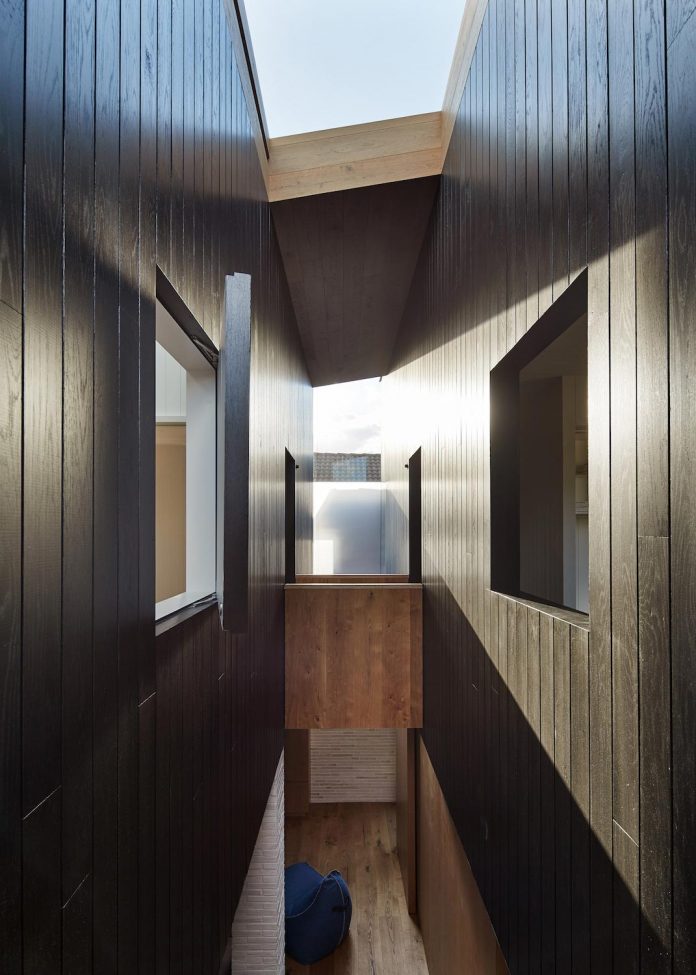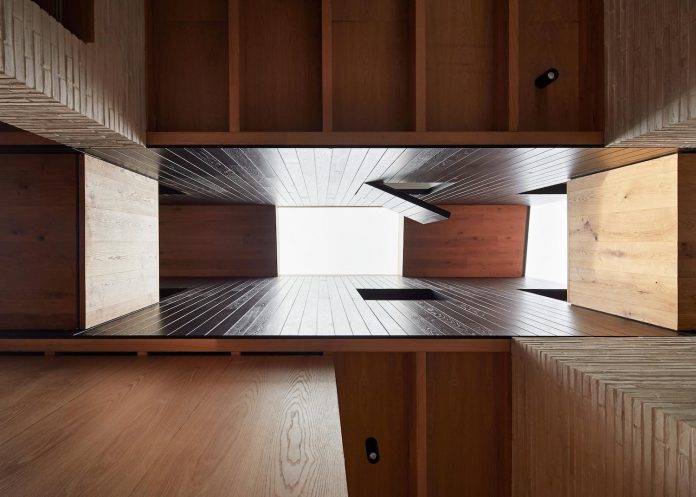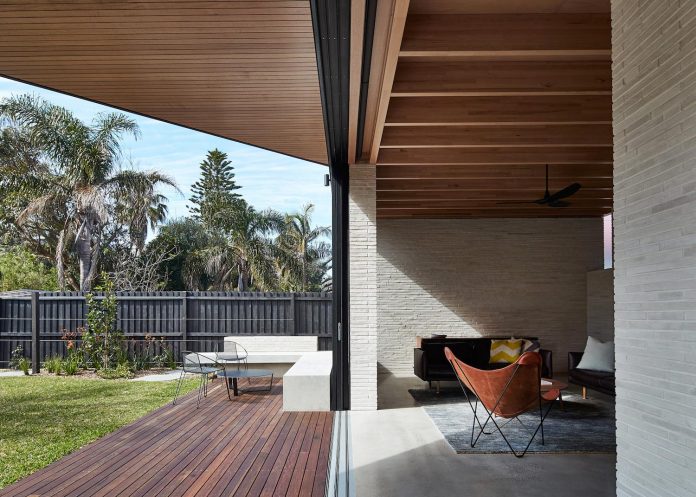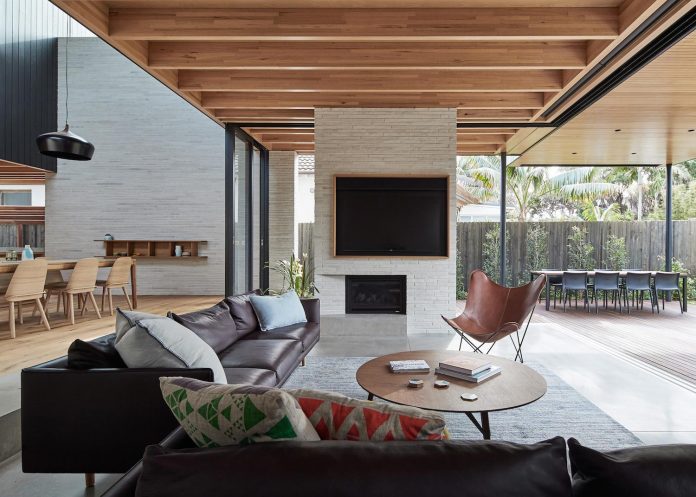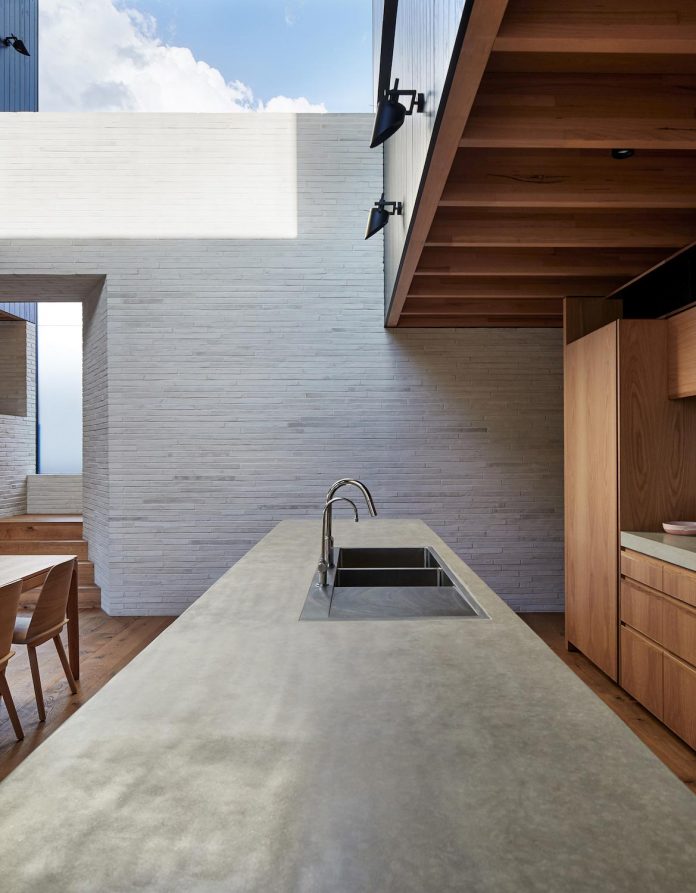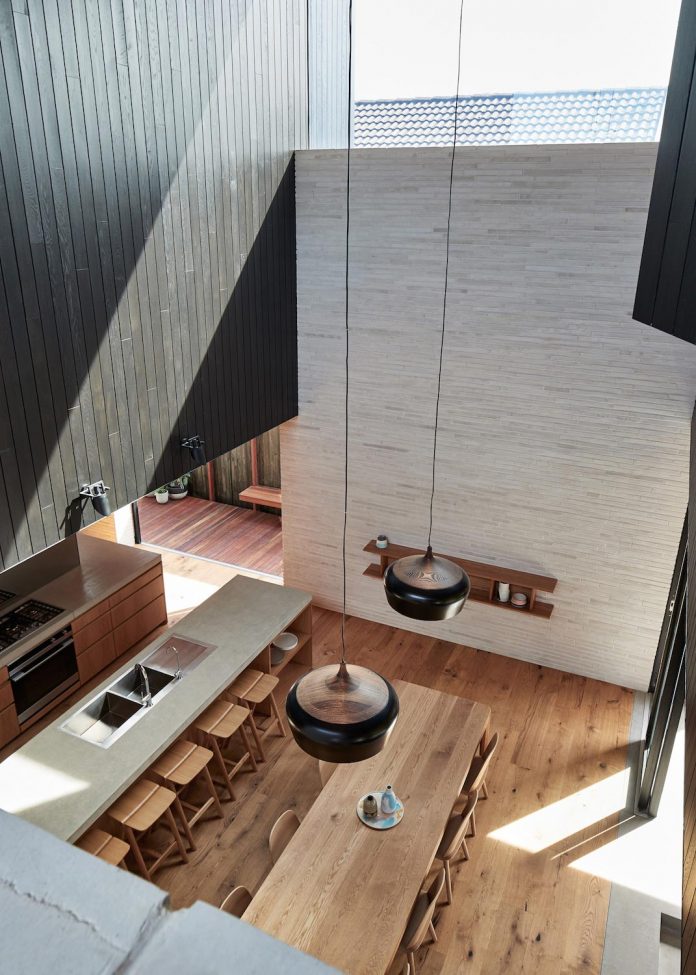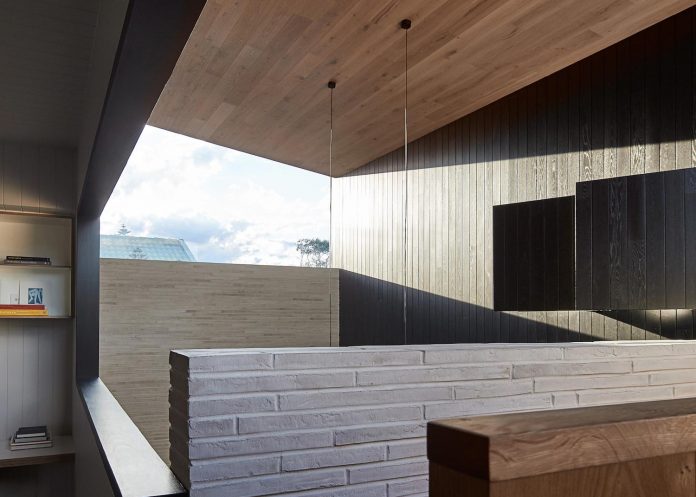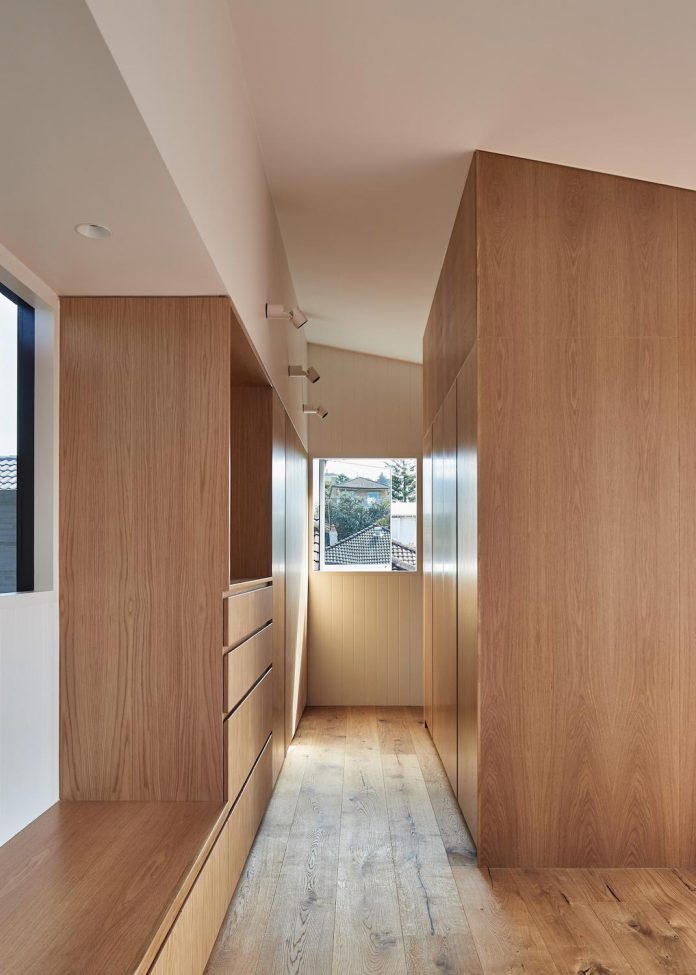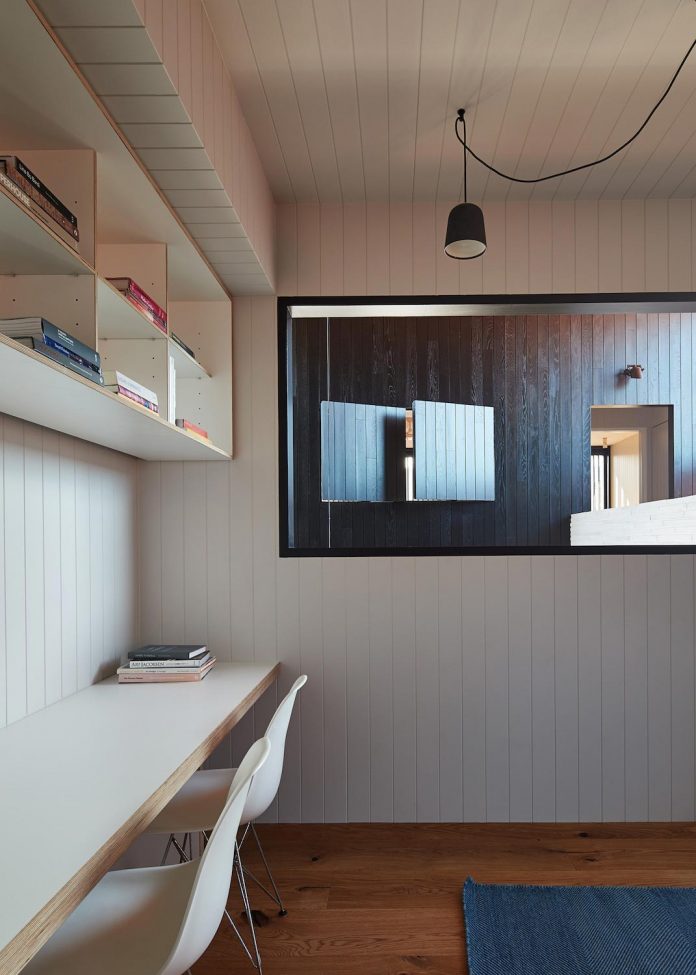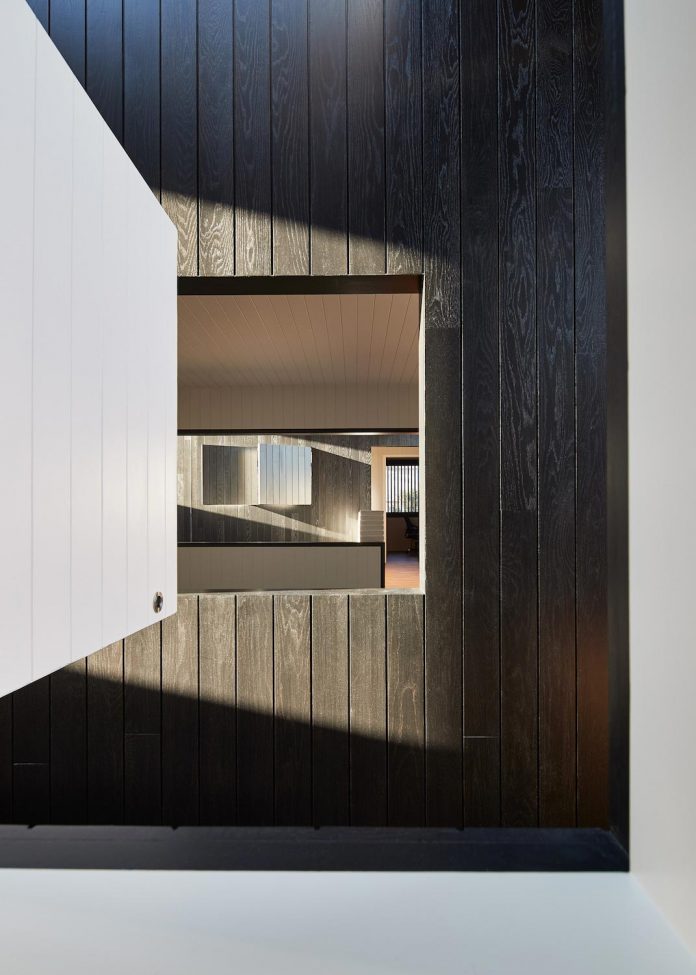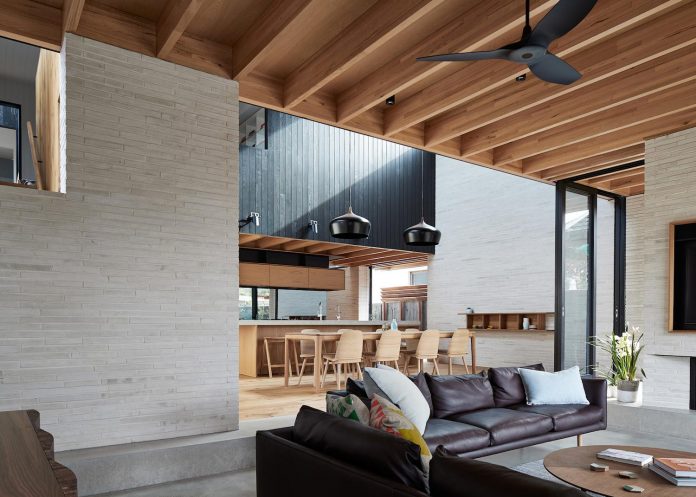Project that actively constructing a micro geometry on the site in terms of climate, amenity and connection to sky and landscape
Architects: Andrew Burges Architects
Location: Sydney, Australia
Year: 2016
Area: 3.336 ft²/ 310 m²
Photo courtesy: Peter Bennetts
Description:
“Our brief for this new two storey dwelling was for a family home of 5 bedrooms, a study and associated living rooms set within a tightly scaled streetscape of detached houses and apartment buildings in North Bondi, Sydney.
The project’s conceptual framework continued our exploration of architecture as a form of geography making. It addressed the curious geography of Bondi, which at the macro scale is connected to some of the archetypal experiences of Sydney’s geography – the Pacific Ocean, Coastal headlands, beach, big sky and rugged coastal flora – but at the micro scale of the individual site is characterised by long, narrow sites of poor building stock and poor amenity in terms of natural light and privacy.
Our project attempted to overcome this dilemma by actively constructing a micro geometry on the site in terms of climate, amenity and connection to sky and landscape. The key project elements in creating this geography are a subtle, varied topography of the ground plane, a brick base of varied heights according to the outlooks they are opening or screening, and an upper level consisting of three ‘bridges’ spanning the brickwork, creating an internal rhythm of bedroom volumes and double height skylight voids that define the interior.
In the spatial and material resolution of the house a distinction was made between the ‘public’ programs and the ‘private’ programs of the house. All public programs are characterised by a robust natural palette that draws the exterior materials into the public elements of the interior. This play between inside and outside was also a key strategy in creating a scale and complexity that reframed elements of the house as part of a broader ‘context’ interacting with sky and landscape, creating layered views from rooms through other elements of the house to sky and garden beyond. In the larger of the two double height skylight voids, large glazed windows above the brick walls are detailed to have no visible evidence of window framing, creating the illusion that all public spaces of the interior are open to the external elements beyond. The floor levels and materials introduce a subtle topography into the flat site with level changes at the living and dining area to create thresholds within the open plan arrangement.
Materials include oak timber floors, concrete flooring, Victorian Ash glulam beams, Petersen’s Kolumba bricks, American oak ceilings, and burnt ash external cladding. Care was taken to co-ordinate timber finishes across different trades and suppliers to maintain a simple, monolithic palette of concrete, brick, and timber defining the interplay of robust exterior and refined interior finishes within the internal envelope of the house.
Key sustainability measures included in the house are the use of thermal mass on the north facing wall and flooring, screened to minimise summer sun exposure and maximise winter exposure for passive heating; all rooms designed for cross ventilation with ceiling fans to eliminate air conditioning; hydronic floor heating and gas heater as primary form of heating; heat extractors concealed within roof attic to release summer heat buildup within upper level rooms and double height voids, materials selected for longevity and durability, LED lighting used throughout, wiring for provision of future solar panels on roof, rainwater capture and re-use for toilets, water and irrigation.”
